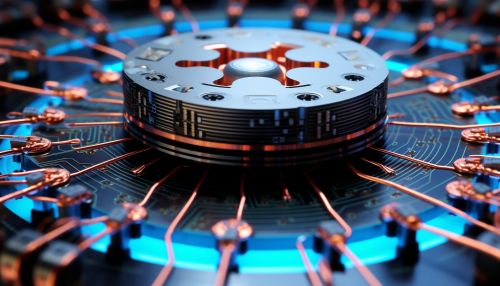The Physics of Spintronics and Magnetic Memory Devices
Introduction
Spintronics, or spin electronics, is an emerging field of nanoscale electronics involving the detection and manipulation of electron spin. Unlike traditional electronics which rely on the electrical charge of electrons, spintronics exploits the intrinsic spin of electrons and its associated magnetic moment. This technology has significant implications for the development of new classes of devices, particularly in the realm of magnetic memory devices.


The Physics of Spintronics
The fundamental principle of spintronics is based on the quantum mechanical property of particles known as spin. In quantum mechanics, spin is a type of angular momentum, a vector quantity that represents the rotation of a body. In the case of an electron, it can be visualized as a tiny magnetic field, or magnetic moment, that results from the electron's spin.
The key to understanding spintronics lies in the Pauli Exclusion Principle. This principle states that no two fermions (a category of particles that includes electrons) can occupy the same quantum state simultaneously. This leads to the concept of spin-up and spin-down states, which are two distinct quantum states that an electron can occupy.
In a magnetic material, the alignment of electron spins creates a net magnetic moment, or magnetization. In spintronics, the manipulation of this magnetization is the key to creating new types of electronic devices.
Spin-Polarized Current
One of the key concepts in spintronics is the spin-polarized current. This is a current that carries predominantly one type of spin state, either spin-up or spin-down. The generation of a spin-polarized current is achieved through the use of ferromagnetic materials, which have a majority of electrons in one spin state.
The ability to generate and manipulate spin-polarized currents is fundamental to the operation of many spintronic devices. For example, in a spin valve, a device used in magnetic memory, the resistance of the device depends on the relative alignment of the magnetization in two ferromagnetic layers separated by a non-magnetic layer. By manipulating the magnetization in these layers, one can control the resistance and thus the current flowing through the device.
Giant Magnetoresistance (GMR)
The discovery of Giant Magnetoresistance (GMR) in the late 1980s marked a significant milestone in the field of spintronics. GMR is a quantum mechanical effect observed in thin film structures composed of alternating ferromagnetic and non-magnetic layers. When an external magnetic field is applied, the relative alignment of the magnetization in the ferromagnetic layers changes, leading to a significant change in electrical resistance.
This property has been exploited in the design of magnetic memory devices, such as hard disk drives, where the GMR effect is used to read data stored in the form of magnetic domains.
Magnetic Tunnel Junctions (MTJs)
Magnetic Tunnel Junctions (MTJs) are another key component in spintronic devices. An MTJ consists of two ferromagnetic layers separated by a thin insulating layer. When a voltage is applied across the junction, electrons can tunnel from one layer to the other. The probability of tunneling depends on the relative alignment of the magnetization in the two ferromagnetic layers, leading to a change in resistance that can be used to read and write data.
Spin Torque Transfer (STT)
Spin Torque Transfer (STT) is a phenomenon where the spin of electrons can exert a torque on the magnetization of a ferromagnetic material. This effect can be used to switch the magnetization direction of a magnetic layer in a spintronic device, enabling the writing of data in magnetic memory devices.
Magnetic Random Access Memory (MRAM)
One of the most promising applications of spintronics is in the development of Magnetic Random Access Memory (MRAM). MRAM is a type of non-volatile memory that uses magnetic states to store data. Unlike conventional memory technologies, MRAM retains information even when power is removed.
In an MRAM device, data is stored in the form of magnetic domains in a thin ferromagnetic layer. The state of these domains (up or down) represents binary data (0 or 1). Reading and writing of data is achieved through the use of MTJs and the STT effect.
Future Perspectives
The field of spintronics holds great promise for the future of electronics. The ability to manipulate the spin of electrons offers a new degree of freedom in the design of electronic devices, potentially leading to faster, smaller, and more energy-efficient devices. In particular, the development of MRAM could revolutionize the field of data storage, offering a faster and more reliable alternative to existing memory technologies.
